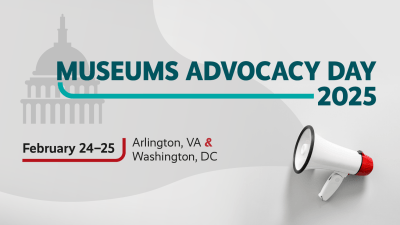When I leading forecasting exercises, helping people to question assumptions and imagine alternate futures, one scenario that participants repeatedly create is one in which museums no longer have nonprofit status.
Why does it come up so often? Because imagination, encouraged to run free, often turns dark, and this scenario strikes at the heart of who we are as a field. It not only points out the vulnerability of our financial model, it threatens our identity. Is there a potential future in which museums’ value as community assets are not tangibly valued through tax exemption, and people’s support of museums is not rewarded with deductions?
Probably, yes, this future exists in the cone of plausibility. One good indicator of its potential is that we see the early signs in the present. For example, President Obama’s deficit commission recently recommended the charitable deduction be eliminated and replaced with a 12-percent tax credit (available to those who had donated a certain percentage of their income.) While the final vote fell short of that needed to formalize the recommendations and send them to the House and Senate floors for an up or down vote, the 11-7 tally for the plan demonstrated substantial support for this approach.
Another example that has been quietly growing for years is the pressure on nonprofits to make Payments in Lieu of Taxes. (Note the ominous acronym PILOT—implying this phenomenon may be leading us into the world to come.)
Skip over related stories to continue reading articleYesterday, the Boston PILOT Taskforce released their report with recommendations on how the payments should work in that city. Here is a good article covering the story.
Skimming the report, here are a couple of the things that struck me:
• One of the models the Taskforce considered (and rejected) would have calculated payments based on a fixed rate multiplied by the number of museum visitors. Such models are used elsewhere, designed primarily to apply to hospitals and colleges, where the “units” are beds and students, rather than visitors. What a nightmare that would have been, given that our sector has no standardized way to record admission numbers! And it would penalize museums that subsidize admission and do a good job of attracting robust audiences.
• The formula the Taskforce created for suggested payments is based on the value of city services (police, waste collection, etc.—set at 25% of the property value, since these services eat up 25% of the city budget). Against this, they propose to offset the monetized value of the benefits that a nonprofit provides to the city. Red flag! Flip to that section of the report: sure enough, the benefits so valued have to be ones the City would “support in its budget if the institution did not provide it,” and must be “quantifiable.” Why do I have a bad feeling that museums are not going to be able to make the case for having the benefits they provide to the city recognized in this way? (An instinct supported by the reference to the time the taskforce spent “reviewing the community benefit submissions by the major colleges and hospitals.” Did the museums not even try? I know that major colleges and hospitals are big compared to most museums, but still, the MFA is listed in the report as a property owner on par with some of the smaller city colleges such as Simmons and Emmanuel, and hospitals like Beth Israel Deaconess and Brigham and Women’s.)
I freely admit I am an amateur in tax law and city finance, and I welcome your collective wisdom to interpret developments such as the Boston PILOT program. Do you see other early indicators of threats to the public support we have grown accustomed to? Should we prepare for a future in which we have to quantify our value to society in order to earn this support? Please, weigh in.









In keeping with the theme on environmental sustainability, perhaps reduced burden on city infrastructure through green practices (water use reduction, increased stormwater management onsite, etc.) might stave off pilot fee issues? I am advocating for it: http://sustainablemuseums.blogspot.com/search/label/PILOT%20fees
Museums in this model (and I'm not going to wade through any civic administration's bureaucrapese to back this up) should be evaluated in the same column as sports franchises, not hospitals. We should get similar credit for attracting tourist spending, as well as locals leaving the suburbs on a day-out.